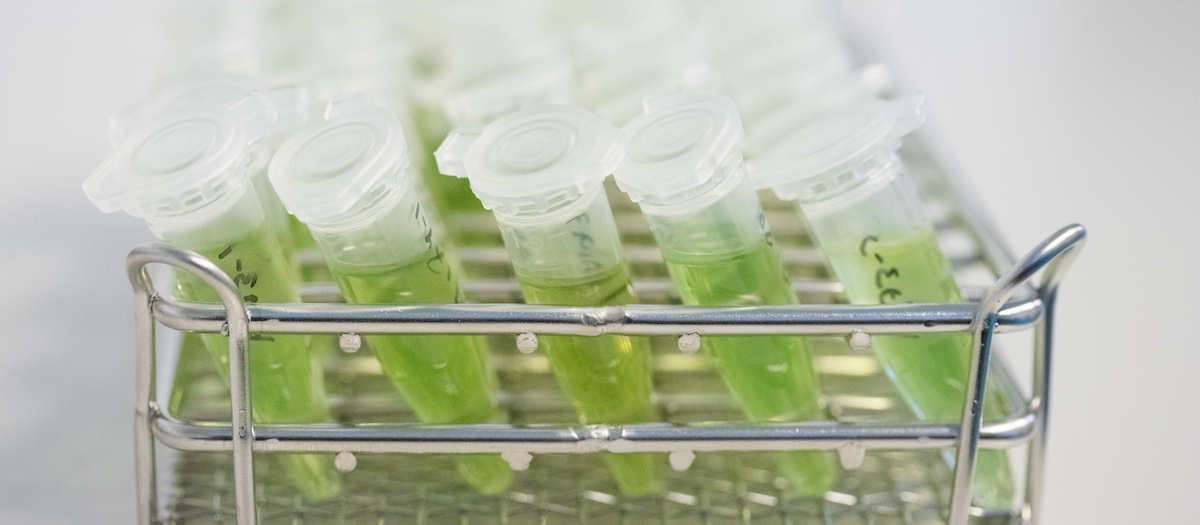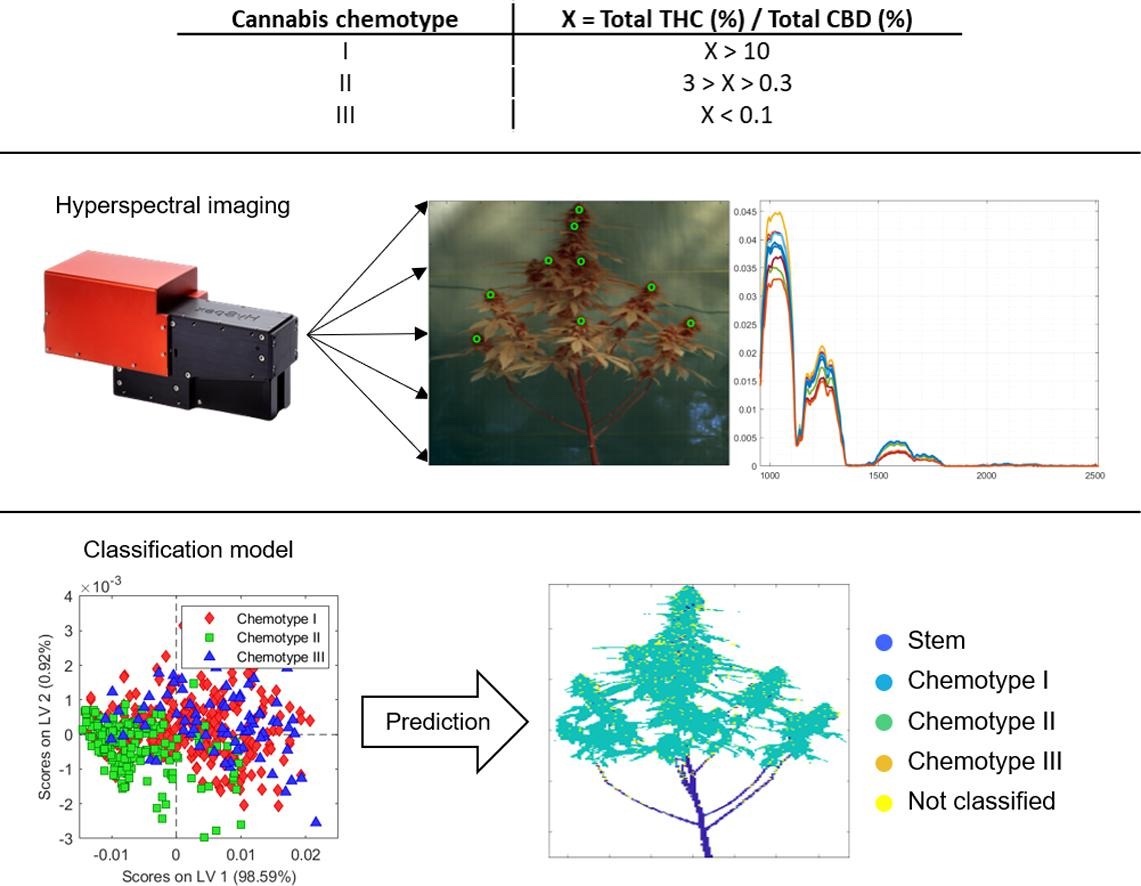- The production of medical cannabis requires strict controls to ensure its quality and safety. Current analysis techniques are precise but slow, making large-scale control difficult.
- Now, a new technique developed by researchers of the University of the Basque Country facilitates the classification of cannabis plants in the same place they are cultivated, helping ensure traceability and quality control in an automatic and speedy manner.
- This technique is based on both hyperspectral images which capture plant information at different wavelengths, and machine learning, which analyses these images to identify the type of cannabinoid found in each specimen.

The growing acceptance of medical cannabis has led to a worldwide increase in the production of this plant to take advantage of its therapeutic properties, which can influence the regulation of brain plasticity, neuronal development, or energy balance. But part of the associated legal and regulatory framework hasn't kept pace: the current lack of quality control standards or standards for correct cultivation processes could lead to uncontrolled and even harmful cannabis products. It is therefore necessary to develop precise and efficient methods to ensure quality control in the production process of medicinal cannabis plants.
One possible solution could be improved optical imaging of cannabis plants so they can be classified according to their chemotypes (different classifications based on the amount of cannabinoids), as shown in a study by the Department of Analytical Chemistry of the University of the Basque Country. This research team has developed a technique based on hyperspectral imaging (three-dimensional photography) and machine learning, which has been designed to ensure the traceability and quality control of medical cannabis plants at industrial scale, via a simple method that can be used on site.
The study, which was recently published in the journal Computers and Electronics in Agriculture, could pave the way for non-invasive horticultural quality control in the production of medical cannabis, serving an emerging industry that will require strict control over cannabis chemotypes.
This is a new approach that also has the advantage of avoiding time-consuming and destructive analytical techniques, such as gas chromatography. "Samples require pre-treatment: they are dried, extracted, and then analysed using analytical techniques such as chromatography. In this work we have shown that the hyperspectral camera facilitates the differentiation between the chemotypes of the plant using a much simpler system", explains Markel San Nicolás, researcher of the IbeA group of the University of the Basque Country.

Ensuring rapid traceability
Near-infrared hyperspectral images (NIR-HSI) are attractive as a modality for this application, as they let you visualise an object in two dimensions as a normal image, while recovering a broad electromagnetic spectrum of each pixel. Hence, the photograph has three dimensions; that is, it has the two dimensions of normal photos, distributed in pixels, but each pixel has a full spectrum instead of a single colour. This way, a cube of three-dimensional data is obtained, with each pixel corresponding to a full spectrum of near-infrared, which allows for a non-invasive analysis of plants.
In the tests of the study, NIR-HSI images were taken of 57 cannabis plants in the facilities of Sovereign Fields SL, a company that has authorisation from the Spanish Agency of Medicines and Medical Devices (AEMPS) for the cultivation of cannabis for the production of seeds and cuttings for medical or scientific purposes.
The images were taken using a spectral range of 930 to 2500 nanometres divided into 288 spectral channels. Data analysis based on machine learning using trained algorithms later classified the target plants as belonging to chemotypes I, II, or III, which are plant variants that differ according to their amount of the cannabinoids THC and CBD.
The project approach was able to successfully extract the three chemotypes of interest and determine the concentration of THC and CBD in the buds, with a success rate of 94.74 per cent, according to the study.

Advantages of this technique to ensure chemotype quality control
Therefore, this novel technique has several benefits:
- Speed: The analysis is carried out in real time, without the need for prior preparation of the samples.
- Precision: Chemotype classification ensures the quality of the final product.
- Simplicity: The system is easy to use and doesn't require highly specialised personnel.
This methodology based on NIR-HSI, along with machine learning for chemotype classification, can also adequately address the problem of moisture in the fresh plant tissue, which is often the main drawback when using conventional near-infrared spectroscopy to analyse cannabinoids. The new approach also facilitates representative analysis directly on a full live plant specimen.
However, to improve the generalisation of the results, the classification model would need much more extensive training data, that is, a much larger number of samples, with a greater coverage of cultivar variety at different times of cultivation.
Therefore, an ideal proposal would be to expand model calibration data with more cultivars of the three chemotypes, ideally balancing the statistical weight of the classes and adding spectra from different plant tissues (such as leaves), and complementing them with spectra at different levels of growth. This way, a regressive trend would be deduced according to the different growth times, allowing for the prediction of the corresponding chemotype in specimens in early stages of development.
"The implementation of this technology at sites where medical cannabis is produced would quickly and automatically ensure the traceability and quality control of the chemotype", claims Markel San Nicolás. And, although researchers consider that more studies still need to be conducted, this work may be the starting point to begin using this type of technique in cannabis production, as long as "a regulation related to medical cannabis is first established to be able to advance in this industrial sector", concludes the Basque researcher.
---



Comments from our readers
There are no comments yet. Would you like to be the first?
Leave a comment!Did you like this post?
Your opinion about our seeds is very important to us and can help other users a lot (your email address won't be made public).